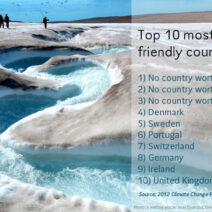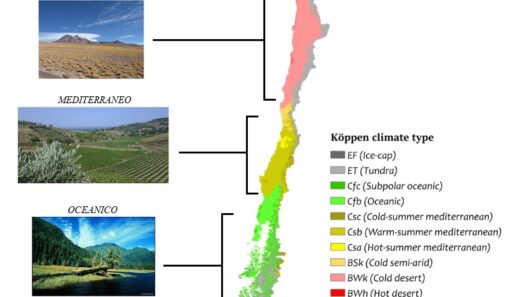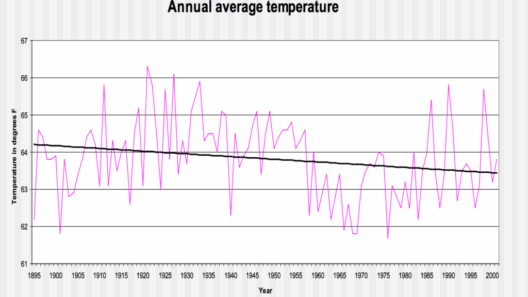Altitude, a seemingly innocuous measure of vertical distance from sea level, wields a profound influence over local climates. Have you ever pondered why two regions, separated by mere kilometers yet differing in elevation, can experience drastically divergent weather patterns? The concept invites us to explore the fascinating interplay between elevation and climate—a relationship characterized by both complexity and consequence.
As altitude increases, a myriad of atmospheric changes unfold. The temperature invariably declines; a rule of thumb indicates a decrease of roughly 6.5 degrees Celsius for every kilometer gained in elevation. Thus, one might question how this decline impacts not only flora and fauna but also human life and activities. The ramifications extend beyond mere discomfort; they shape ecosystems, agricultural viability, and even the socioeconomic fabric of communities situated at different heights.
The expansive role of altitude begins with its notable effect on precipitation. Mountainous regions confidently announce their presence through orographic lift. As moist air ascends, it cools, leading to the condensation of water vapor and the formation of clouds. This natural phenomenon often results in increased rainfall on the windward side of mountains, while creating arid conditions on the leeward side, aptly known as rain shadows. This stark distinction presents a challenge: how do ecosystems adapt to such extremes? The resilience and diversity of life in these regions provide a rich tapestry showcasing evolutionary ingenuity.
Consider the verdant slopes of the Andes that cradle copious biodiversity against the backdrop of parched deserts to the west. Or think about the Himalayas, where glaciers serve as vital freshwater reservoirs for millions. In these contexts, altitude is not merely a statistic; it is a design blueprint that orchestrates life’s abundance and scarcity. Agricultural practices, too, oscillate in response to altitude. Higher altitudes may yield different crops, influenced by temperature variations and sunlight exposure. This divergence begs the question: can communities harness their altitude to cultivate resilience against climate change?
The temperature gradient contributes to stratified ecosystems as well. Elevations foster distinct biomes, from temperate forests with their rich canopy and undergrowth to alpine regions, where conditions become harsh and life uncertain. As one ascends, the flora undergoes remarkable transformations—lush greenery gives way to resilient mosses and hardy shrubs. Such diversity underscores the delicate balance maintained in these ecosystems. However, climate change, driven by anthropogenic activities, poses an existential threat to these altitudinal variations. With global temperatures on the rise, the habitats and life forms accustomed to particular altitudes face unprecedented challenges.
Moreover, the interplay of altitude and climate directly impacts human communities in profound ways. In regions like the Tibetan Plateau, where altitude and environmental conditions are intrinsic to the local culture, climate change could undermine centuries of agricultural wisdom. How do communities adapt to shifting environmental realities while preserving their cultural heritage? The answer lies in innovation, sustainability, and a commitment to environmentally conscious practices.
Temperature inversions—another consequence of altitude—further complicate the climatic equation. During inversions, warm air blankets colder, denser air, trapping pollutants and creating smoggy conditions in valleys. Acute environmental challenges arise in this context. For instance, cities nestled within valleys often suffer from severe air quality issues, exacerbated by their proximity to industrial activities. An intriguing challenge in urban planning emerges: how can cities mitigate the impacts of altitude-induced inversions while fostering healthy environments for their populations?
On the other hand, higher altitudes can be landscapes of therapeutic value, offering retreat from the frenetic pace of urban life and polluted air—an antidote, if you will. Many retreat centers are established in elevated locales, celebrating the crisp air and serene surroundings. However, this trend also poses an ecological challenge: the influx of visitors may strain fragile ecosystems. What measures can be implemented to ensure the protection of these pristine environments while allowing human interaction with nature?
The complexities of altitude and climate further intertwine with the phenomenon of climate feedback loops. For instance, as temperatures rise, glacial and snowpack melt accelerates, leading to significant alterations in water availability. Regions heavily reliant on glacial meltwater for agriculture may face crises, particularly as the demand for water grows with population pressures. This predicament invites the urgent question: how can societies proactively manage their water resources to adapt to shifting climatic realities?
Ultimately, the interplay between altitude and climate is a tapestry woven with myriad threads, all susceptible to climatic disturbances. The relationships we observe on our planet are not merely mechanical; they are deeply interconnected systems evolved over millennia and now facing the determiner of anthropogenic climate change. As altitude effects ripple throughout ecosystems, communities, and economies, the imperative for awareness and action grows ever more urgent.
In conclusion, the altitude-climate relationship offers valuable insights into the challenges presented by our changing world. Communities, ecosystems, and cultures literally balance on thin air, confronting big impacts. Through understanding and innovation, there lies the potential for adaptation and resilience. The question remains: how will we rise to the challenge, shaping a future that honors both the altitude and the artistry of our planet’s climate?







